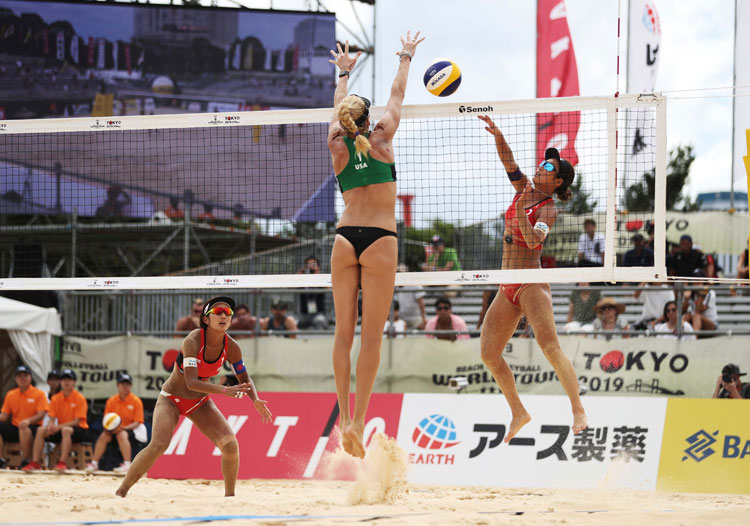
Developing defensive techniques in boxing is an essential part of success in the ring.
In particular, the technique of parring is extremely important in skillfully dodging the opponent’s attacks and waiting for counter opportunities.
However, the challenge many boxers face is how to acquire and hone effective parring techniques.
This technique requires more than just reflexive movements; it requires proper form, timing, and strategic thinking.
In this article, we will thoroughly explain the tips for parling in boxing, from the basics to its applications.
Whether you’re a beginner or an experienced player, we’ve got the content to guide you in incorporating this important technique into your skill set.
目次
- 1 Purring Basics: Tips for Defensive Techniques in Boxing
- 2 What is parling?
- 3 Master effective parring: Steps to improve your boxing skills
- 3.1 Step 1: Understand basic forms
- 3.2 Step 2: Practice timing
- 3.3 Step 3: Practice with a partner
- 3.4 Step 4: Practice transition to counterattack
- 3.5 Step 5: Continuous improvement and reflection
- 3.6 Step 6: Mental strength
- 3.7 Step 7: Improve strength and flexibility
- 3.8 Step 8: Continuous learning and adaptation
- 4 Boxing parring tips: Techniques to avoid and control counters
- 5 Make a difference through practice! Boxing training using parring tips
Purring Basics: Tips for Defensive Techniques in Boxing
Attacking is the key to victory in boxing, but mastering defensive techniques is the foundation that supports it.
In particular, the technique called “parring” has the potential to skillfully evade the opponent’s attacks and change the flow of the match.
Parling is an advanced skill that allows you to lightly parry your opponent’s punches, nullifying the attack and creating a chance for a counterattack.
This technique is one of the most effective defensive tactics in boxing, and many top fighters say that learning to parl is essential to their success.
However, acquiring proper paring technique requires precise timing and correct form.
Here, under the theme of “Purring Basics: Tips on Defensive Techniques in Boxing,” we will provide basic points for effective parring and practical advice for mastering them.

What is parling?
Parling is a defensive technique in boxing that nullifies an opponent’s attacks, especially punches, by parrying them.
This movement utilizes the force of your opponent’s punch and evades the attack by lightly changing its direction with your hands and arms.
The key to parring is that it relies not on force, but on timing and technique. By making the right moves at the right time, you can effectively avoid your opponent’s attacks and use the opportunity to counterattack.
Parling is not just about dodging a punch, it is also a tactical move that uses the momentum of your opponent’s attack to create an advantageous position for yourself.
Proper paring can keep your opponent off balance or allow them to counterattack from angles they didn’t expect.
This technology has high strategic value as it allows a smooth transition to attack and a natural flow from defense to attack.
Successful parling requires careful observation of your opponent’s movements and the insight to pick up on the slightest signs before a punch is thrown.
In addition, small movements of the body and fine adjustments to the position of the hands are important, so advanced technique and practice are required.
Mastering effective parring is one of the essential skills a boxer has to stay safe and gain an advantage in the ring.

Master effective parring: Steps to improve your boxing skills
Mastering effective paring is very important in improving your defense and counterattack techniques in boxing.
Parling is a basic skill for skillfully dodging your opponent’s attacks while creating opportunities for counter punches.
Below are steps to learn effective purring.
Step 1: Understand basic forms
- Correct stance: Before parring, you need a balanced stance. Stand with your feet shoulder-width apart and your knees slightly bent. Keep your hands in a position to protect your face and remain relaxed.
- Hand position: The position of your hands when parring is important for effectively parrying your opponent’s punches. Depending on the direction the punch is coming from, use your hands and arms to gently change the direction of the punch.
Step 2: Practice timing
- Timing is important: Parling success is highly dependent on timing. You need to see when your opponent’s punch is going to be thrown and use that momentum to change direction.
- Shadow Boxing: Use shadow boxing to develop a sense of timing by repeating paring motions against imaginary punches.
Step 3: Practice with a partner
- Light Sparring: Practice paring against real punches through light sparring with a partner. Increase your ability to read attack intent and react in real-time.
- Leverage feedback: Leverage partner feedback to improve paring accuracy and timing.
Step 4: Practice transition to counterattack
- Counter Attack: Identify opportunities for counterattack after parring and practice counter punching. A smooth transition from parling is important.
- Assessing the situation: Finding the moment when your opponent loses their balance or the gap between attacks is essential for an effective counter.
Step 5: Continuous improvement and reflection
- Video analysis: Review practice and match videos to analyze purring movements, timing, and transitions into counterattacks.
- Identify and improve issues: Identify issues with your parling technique and plan specific training to improve them.
Mastering effective parring requires proper technique, timing, and situational judgment. By consistently practicing these steps, you will be able to improve your defensive abilities in boxing and smoothly transition into attacks.
With repeated practice, your body will naturally react and you will be able to fight strategically using parring.
Step 6: Mental strength
- Stay focused: Effective paring requires a high level of concentration. During a match, it is important to always pay attention to your opponent’s movements and anticipate his next blow.
- Stay Calm: Reacting calmly to your opponent’s attacks will help you parry at the right time. Calmness is also essential for an effective counterattack.
Step 7: Improve strength and flexibility
- Increased physical strength: Effective paring and counter attacks require good physical strength. Build up your physical strength to withstand long matches through regular aerobic exercise and strength training.
- Increased flexibility: Flexibility increases your range of purring movements and increases your ability to respond to attacks from more diverse angles. Improve your body’s flexibility with daily stretching.
Step 8: Continuous learning and adaptation
- Learn the latest techniques: Boxing techniques continue to evolve. It’s important to learn the latest training methods and tactics and incorporate them into your skill set.
- Adapt your strategy: You need the flexibility to fine-tune your parling usage depending on each match and opponent. Review your strategy for each match and come up with the best plan.
Mastering effective purring is an important step in improving your overall boxing technique.
Through continuous practice and competition practice, master this defensive technique and gain confidence and success in the ring.

Boxing parring tips: Techniques to avoid and control counters
Parling in boxing is an advanced technique that not only avoids an opponent’s attack, but also uses it to lead to a counter attack.
By mastering this technique, you can turn your defense into an opportunity for attack.
Here are some boxing paring tips and how to use them for counter attacks.
Basics of parring
The most important things in parling are timing and precise movements . Use the momentum of your opponent’s punch to lightly parry, nullifying the attack.
This requires insight and reflexes to detect the opponent’s attack intent early and control the punch with minimal movement.
Determining the timing
- Concentrate on your opponent’s movements and read the signs before the punch is thrown. This can be predicted by the movement of the opponent’s shoulders and foot steps.
- At the moment a punch is thrown, you can parry your opponent’s attack by slightly changing the direction of the punch using your hands and arms.
Positioning for effective paring
- It requires good balance and poise. Place your feet slightly wider than shoulder-width apart and bend your knees slightly to keep your center of gravity low.
- Keep your hands guarded in front of your face and be ready to parl or counter at any time.
Counter attack from parling
- After parring, your opponent’s defense will momentarily weaken, so you can take advantage of this and immediately launch a counter attack.
- A counter can be launched from an angle different from the opponent’s attack direction, allowing you to hit the opponent in an unexpected way.
continuous practice
- Purring and counter-attacking will be practiced through shadow boxing, mitt work, and sparring. Repeated practice that closely mimics actual movements will improve your technique.
- In order to make your purring movements small and effective, it is important to optimize your movements through practice.
By mastering boxing paring tips, you can greatly improve the balance between defense and attack in your matches.
This technique of dodging and countering is the key to a boxer’s advantage in the ring.
Make this advanced skill yours through continuous practice and match experience.

Make a difference through practice! Boxing training using parring tips
In order to utilize parring techniques in practice and make a difference in matches, it is essential to hone this technique through daily training and be able to use it reflexively.
Below, we will introduce the key points of boxing training that utilizes the tips of purring.
1. Practice timing
- Shadow Boxing: Parry the expected opponent’s punches and repeat the action of countering them. At this time, it is important to adjust the timing while imagining the opponent’s movements.
- Reaction Ball: Training with a reaction ball, which requires high reflexes, is effective in improving your paring timing.
2. Improve paring accuracy
- Mitt work: Improve the precision of your purring movements through mitt work with a trainer or partner. Practice parring specific combinations and immediately returning counters.
- Video analysis: By recording your own purring movements on video and then analyzing them, you can find areas for improvement and aim for more effective purring.
3. Combination with footwork
- Footwork Drill: Positioning after parling is essential for effective counter attacks. Do footwork drills so you can quickly move into the best position after purling.
- Sparring: During actual sparring, you will be aware of movements that combine purring and footwork, and practice in a manner similar to actual combat. This will also develop your ability to judge situations during matches.
4. Continuous feedback and corrections
- Trainer Feedback: Get regular feedback from your trainer or experienced sparring partner to fine-tune your parring techniques.
- Goal Setting: Set short-term and long-term goals and track your training progress towards improving your parring skills.
5. Mental and physical conditioning
- Stress Management: Psychological conditioning is also important in order to parr calmly even under the pressure of a match. Incorporate mental training and relaxation techniques.
- Strengthening your physical strength: In order to maintain high performance throughout the match, it is essential to improve your basic physical strength. Do regular aerobic exercise and strength training to increase your endurance and explosive power.
In order to make a difference in practice, you need to improve not only your parring technique, but your overall boxing skills and physical ability.
Through training that utilizes parling tips, you can learn strategies that combine offense and defense.
Parling is more than just a defensive technique; it’s a strategic tool for turning your opponent’s attacks to your advantage.
By mastering this technique, you will be able to develop the ability to read the flow of the game and control it freely.
To effectively use parring and dominate your opponent with counterattacks, you need not only technical practice but also strategic thinking.
Analyze your opponent’s attack patterns and plan in advance when to use parling and how to counter.
Furthermore, it is important to learn from the experience gained through sparring and competitions and find a way to use parring that suits your own style.
Finally, effective parring and counter-attacking skills are honed through continuous training and real-world experience.
When training, honestly assess your strengths and weaknesses, always look for room for improvement, and be open to trying new techniques and tactics.
Gain confidence and success in the ring with boxing training using parring tips.





